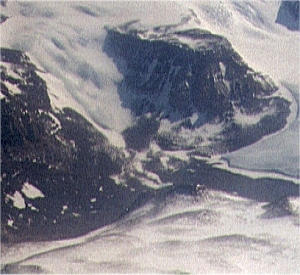
October Editorial

October Editorial
The Opals of Meteorite EET 83309 |
|
Before it was discovered by humans Meteorite EET 83309 spent millennia in an Antarctic moraine. A moraine is a collection of and debris that accumulates through the movement of glaciers which slowly gather up the loose rocks in their path and deposit them either at the foot of the glacier or - for example - at the point where two glaciers meet. This particular moraine was the Elephant moraine in Victoria Land in Western Antarctica. EET 83309 was one of many gathered by a meteorite-hunting expedition in the late 20th century. The meteorite itself was small and very weathered. It was recognizable to an expert eye because a portion remained of the fusion crust created when the rock fell to Earth through the atmosphere. |
|
|
When scientists came to examine the meteorite they discovered that it was the type known as a 'brecciated ureilite'. This is itself rather rare. For a start the 'brecciated' part of the designation meant that the meteorite was formed of broken rock and mineral fragments. Usually meteorites of this type have their origin in a larger parent body – in this case an unknown asteroid. It is probable that EET 83309 was created following the collision of the asteroid with another extra-terrestrial body. 'We suggest that this may have been an impact of an icy planetesimal on the surface of the ureilite parent asteroid.' explained one of the investigators from a team at Birkbeck College London UK headed by Prof. Hilary Downes. The ureilite part of the name means that the composition is mainly olivine-pigeonite achondrite (meteorites of this type get their name from the Russian town of Nowy Urey where the first recognized specimen of the type fell in 1886). What the investigating found exciting about EET 83309 was that it contained fragments of opal. (The exact composition of the meteorite is given here 'The opal occurs as replacement of ureilitic olivine and suessite (Fe3Si), and as broken fragments among the clasts derived directly from the parent ureilite asteroid.' the team reported. The thing about opal is that it is made up of silica with up to 30% water in its structure. As the opal shows a terrestrial weathering rim, the implication is that the opal was formed before EET 83309 arrived on Earth. In other words, it comes from an asteroid with a significant amount of water on or near the surface. Therefore the fragments of opal within this meteorite are strong indicators of what scientists have long suspected – that the asteroid bombardment which the Earth endured during its formation billions of years ago brought substantial amounts of water with it. Or as Prof Downes puts it, 'Although we rightly worry about the consequences of the impact of large asteroid, billions of years ago they may have brought the water to the Earth and helped it become the world teeming with life that we live in today'. Referece: | |
| _______________________________ | ||||
| Home | | | Shopping | | | Database |
© Biscuit Software 2004-2015
All rights reserved